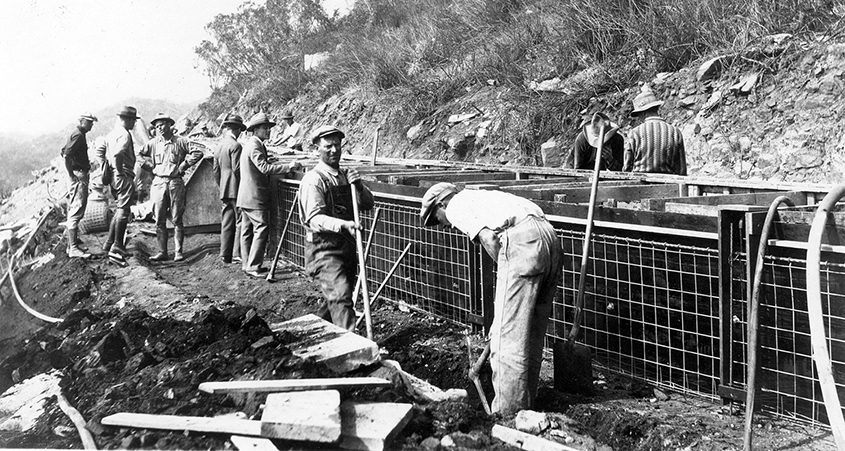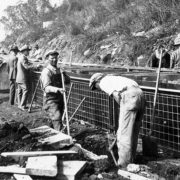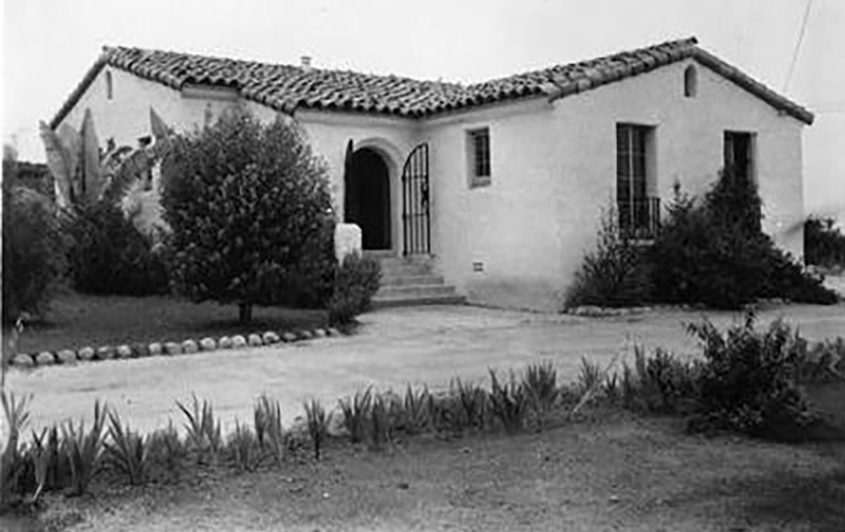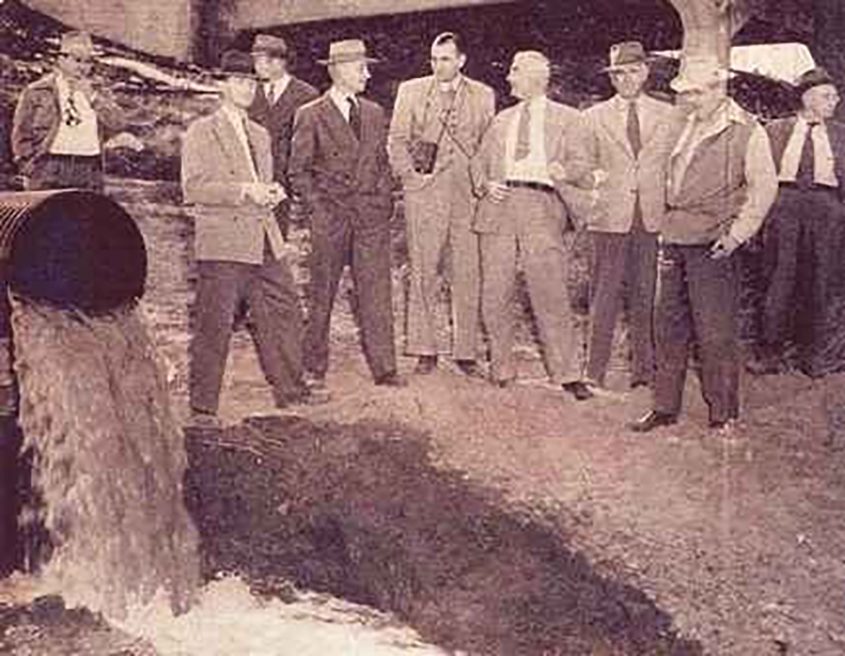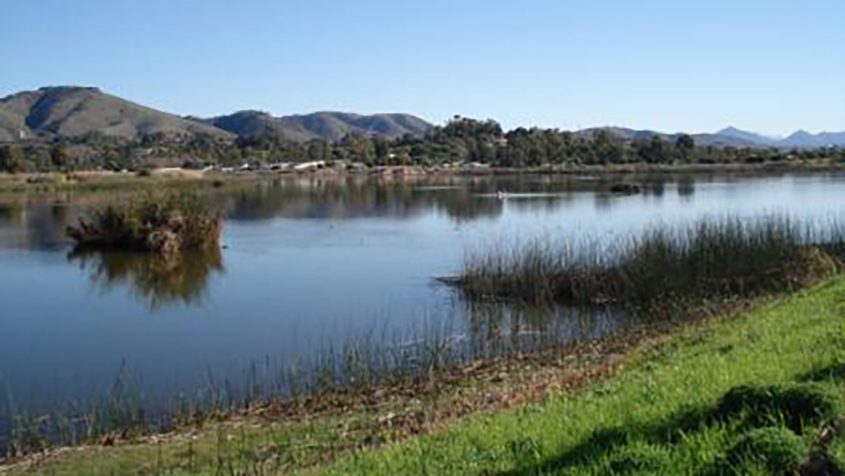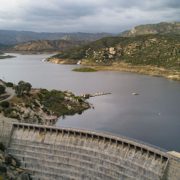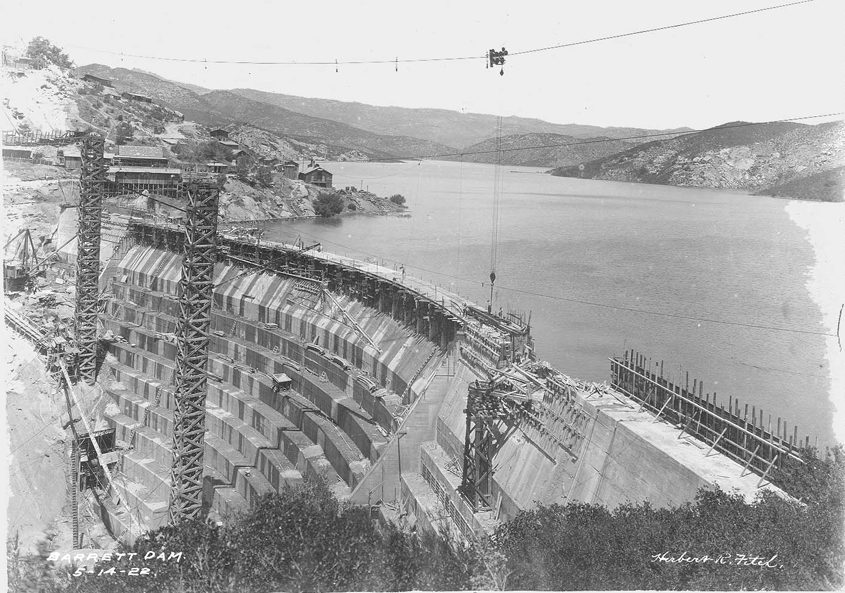The Vista Irrigation District, one of the San Diego County Water Authority’s 24 member agencies, is celebrating its 100th anniversary.
In the 1920s, citrus and avocado farming in the Vista area increased so quickly that the growing region faced the real danger of running out of water. Completing the Henshaw Dam in 1923 made it possible for the Vista community to receive a reliable water source instead of relying on well water.
The arrival of the new water source sparked discussion about forming a water district to secure additional imported water to make continued growth possible. On August 28, 1923, voters approved the formation of the Vista Irrigation District (VID) in a landslide: 104 votes to four votes in a 100% voter turnout.
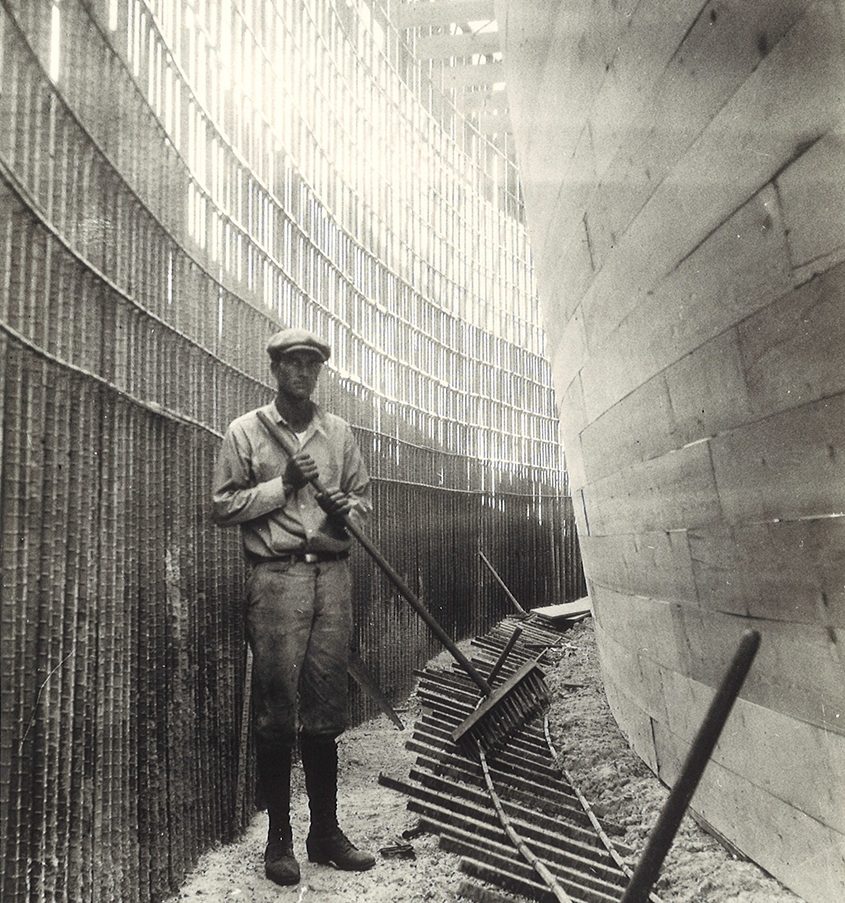
Completion of the Henshaw Dam transformed North San Diego County, including the Vista area, in the 1920s. Photo: Vista Irrigation District
337 customers then, 134,000 customers now
In its first year, VID served 337 customers. Today, VID serves water to more than 134,000 customers in a diversified community and robust economy and is celebrating its 100th anniversary on August 28, 2023.
“Vista Irrigation District is proud of its accomplishments over the last century and looks forward to providing reliable water service to the residents and businesses it serves for years to come,” said Board President Jo MacKenzie.
Water builds new potential in Vista
The Vista community celebrated the arrival of the first water from Lake Henshaw on February 27, 1926. Following the arrival of water, crops of all kinds were planted in increasing numbers. The Vista area became known as the “Avocado Capital of the World,” with six avocado packing houses in the area.
In June 1946, after several years of negotiations, Vista Irrigation District purchased the San Diego County Water Company. Included in the purchase was the 43,000-acre Warner Ranch, a former Spanish Land Grant, which includes Henshaw Dam and Lake Henshaw. The deal was driven by the economic motivation to find another, less costly source of water for VID’s customers.
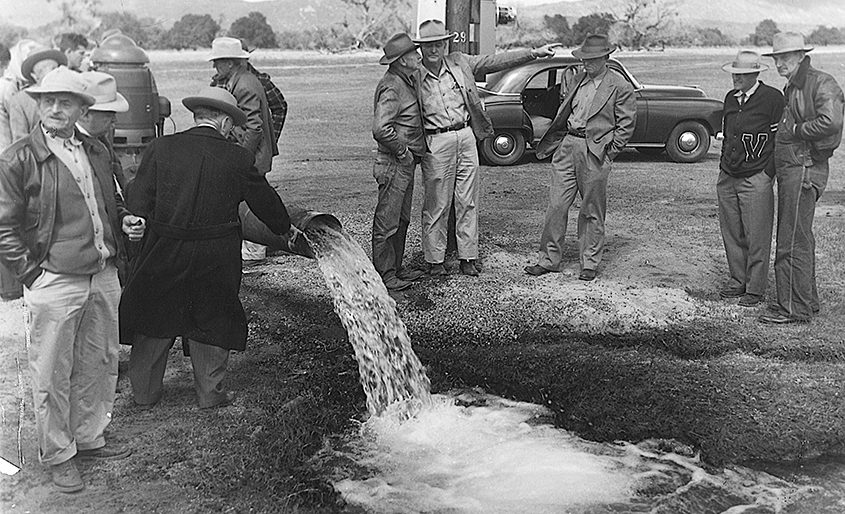
Members of the Vista Irrigation District board visited Lake Henshaw in 1951. Photo: Vista Irrigation District
Drought conditions and population growth continued to press VID to seek additional sources of water. On February 16, 1954, the Vista Irrigation District became a member of the San Diego County Water Authority. It allowed VID to bring in water imported from the Colorado River and Northern California.
One year later, in 1955, Vista’s first suburban-style housing arrived in what had been an agricultural community. The Vista area began experiencing a decline in its avocado producing and packing due primarily to the industry’s economic decline and drought, which would continue into the 1960s. Many avocado groves were split into smaller parcels and sold to housing developers. The land was more valuable for homes.
A century of success
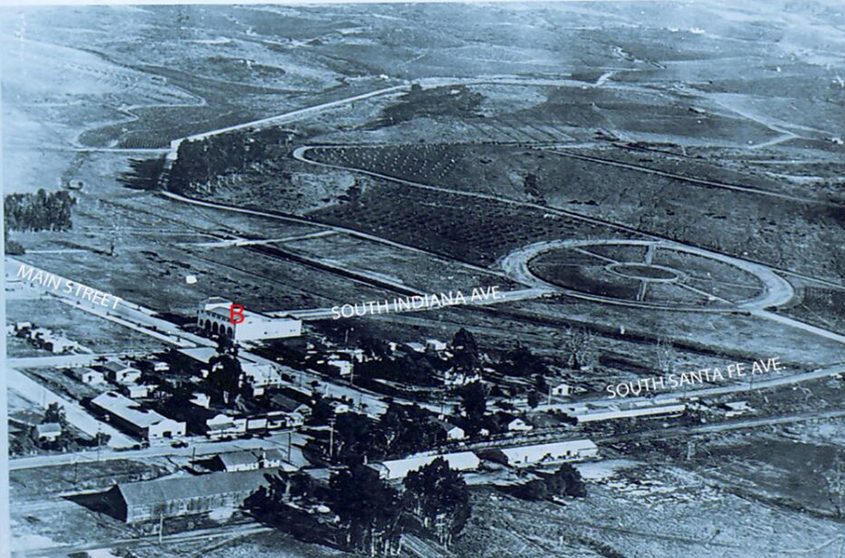
An overview of downtown Vista looking southeast circa 1928. The region began to flourish with the arrival of water. Photo: Vista Historical Society and Museum
The people’s vote in 1923 revolutionized the small rural settlement held back by a lack of water. Over the years, Vista transformed itself from its agricultural origins to a thriving community with a diversified economic base and a revitalized downtown.
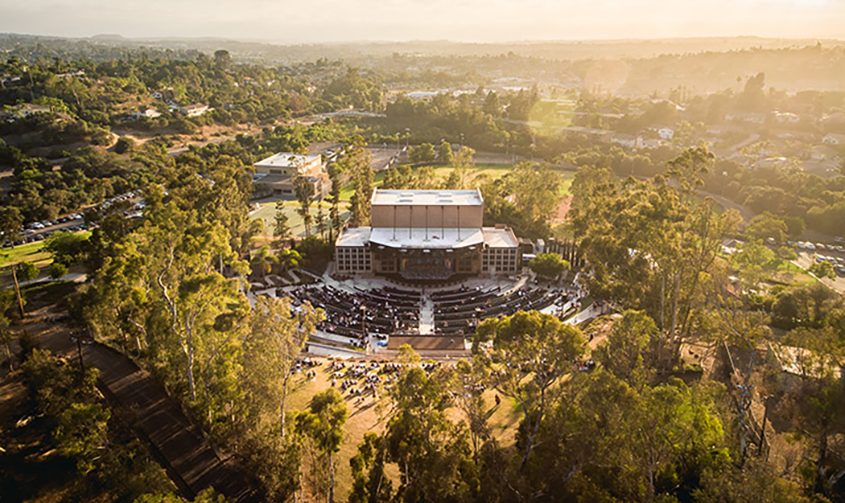
Today, Vista is a thriving community that continues to grow and develop many new activities and attractions, such as its popular Moonlight Amphitheatre. Photo: City of Vista
Vista Irrigation District has demonstrated its ability to adapt to these ever-changing landscapes over time and looks forward to many more successful years of service to the community. Through a century of service and stewardship, the Vista Irrigation District can take credit for its solid track record over the last century to continue many more successful years of service to the community.
(Editor’s note: The Vista Irrigation District is one of the San Diego County Water Authority’s 24 member agencies that deliver water across the metropolitan San Diego region. The District is celebrating “A Century of Service and Stewardship” on Saturday, September 9, at its Vista headquarters. The public is invited to attend.)
